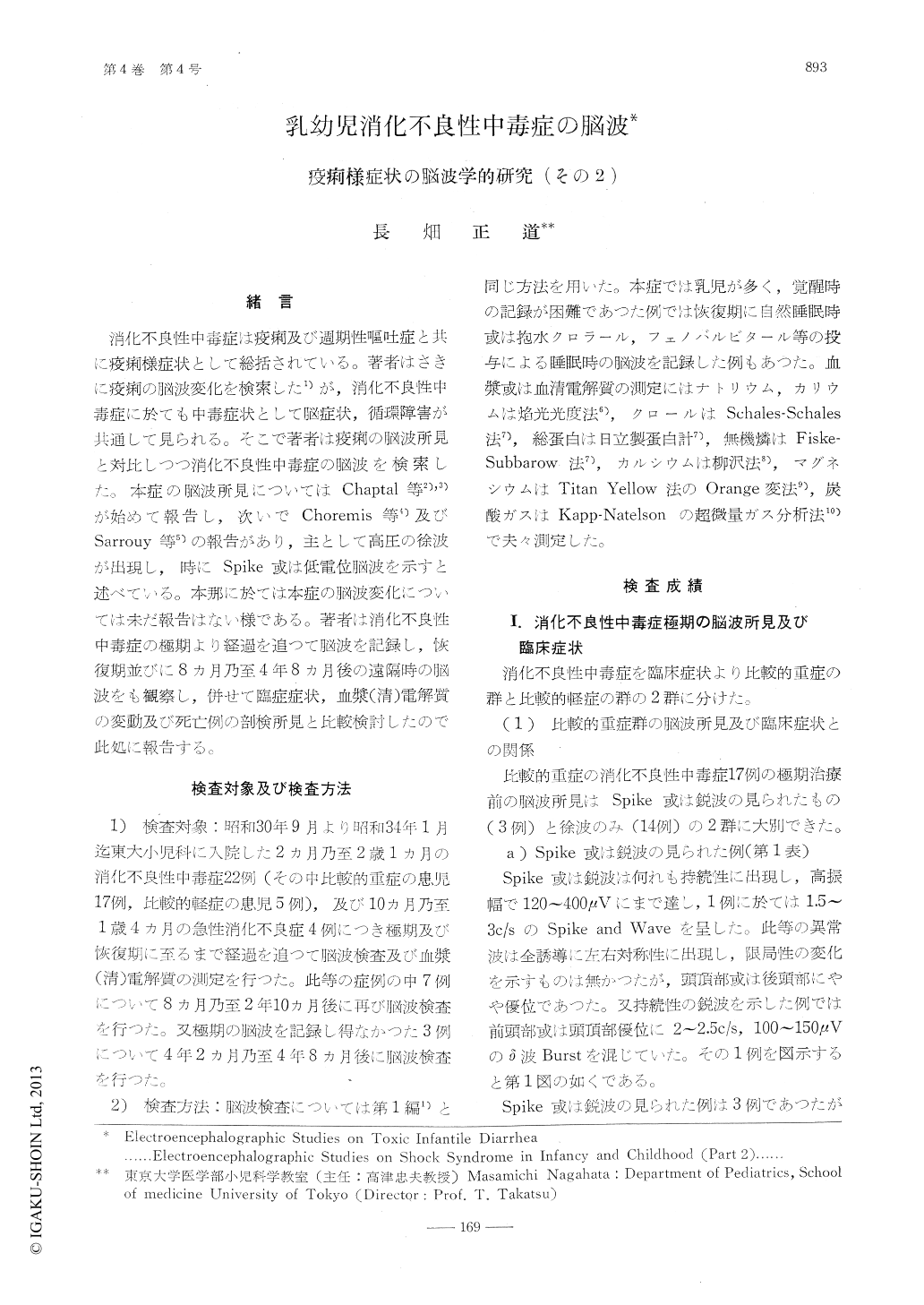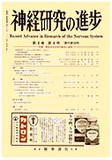Japanese
English
- 有料閲覧
- Abstract 文献概要
- 1ページ目 Look Inside
緒言
消化不良性中毒症は疫痢及び週期性嘔吐症と共に疫痢様症状として総括されている。著者はさきに疫痢の脳波変化を検索した1)が,消化不良性中毒症に於ても中毒症状として脳症状,循環障害が共通して見られる。そこで著者は疫痢の脳波所見と対比しつつ消化不良性中毒症の脳波を検索した。本症の脳波所見についてはChaptal等2),3)が始めて報告し,次いでChoremis等4)及びSarrouy等5)の報告があり,主として高圧の徐波が出現し,時にSpike或は低電位脳波を示すと述べている。本那に於ては本症の脳波変化については未だ報告はない様である。著者は消化不良性中毒症の極期より経過を追つて脳波を記録し,恢復期並びに8カ月乃至4年8カ月後の遠隔時の脳波をも観察し,併せて臨症症状,血漿(清)電解質の変動及び死亡例の剖検所見と比較検剖したので此処に報告する。
Serial electroencephalograms were obtained from a series of 22 cases of toxic infantile diarrhea with the late results in 10 cases and from 4 cases of non-toxic infantile diarrhea. The results were as followed:
1) The electroencephalograms in 17 severe cases of toxic infantile diarrhea were classified into two types. Namely, one was a type which exhibited continuous diffuse multiple spikes, sharp waves or spike and waves. This group had frequent convulsions. The other was a type which displayed symmetrical wide delta or theta waves. They appeared continuously or in paroxysmal bursts. The clinical pictures of the latter group were characterized by circulatory insufficiency and cloudiness of consciousness. The electroencephalograms were moderately abnormal in 5 mild cases and were normal in 4 cases of non-toxic infentile diarrhea.
2) The autopsy finding of two patients, whose electroencephalograms showed continuous wide delta waves before death, revealed brain edem and gliosis.
3) The electroencephalographic abnormalities seemed to relate with the course of the clinical conditions, especially cloudiness of consciousness.
4) Serum (or plasma) sodium level of the cases, which showed continuous spikes or sharp waves, was hyponatremic or within normal limits, and that of the cases, which showed continuous delta weves or delta wave bursts, was hypernatremic or within normal limits. The cases that showed continuous theta waves or theta wave bursts were all hypernatremic.
5) Low. voltage electroencephalsgrams were observed at the time from 6 to 24 hours after the start of fluid therapy, and lasted from 24 to 48 hours. Three out of 11 cases, that exhibited low voltage electroencephalograms, died.
6) The late results of electroencephalographic studies after 8 months until 4 years were as follows ; 2 out of 10 cases showed localized spikes or spike and wave complexes.
7) On the basis of the results stated above, it was considered teat electroencephlographic abnormalities at the climax of the disease in toxic infantile diarrhea strongly resembled that of toxic dysentery in childhood, and therefore the mechanism of ,appearance of electroencephalographic abnormalities in these two diseases might be similar.

Copyright © 1960, Igaku-Shoin Ltd. All rights reserved.


